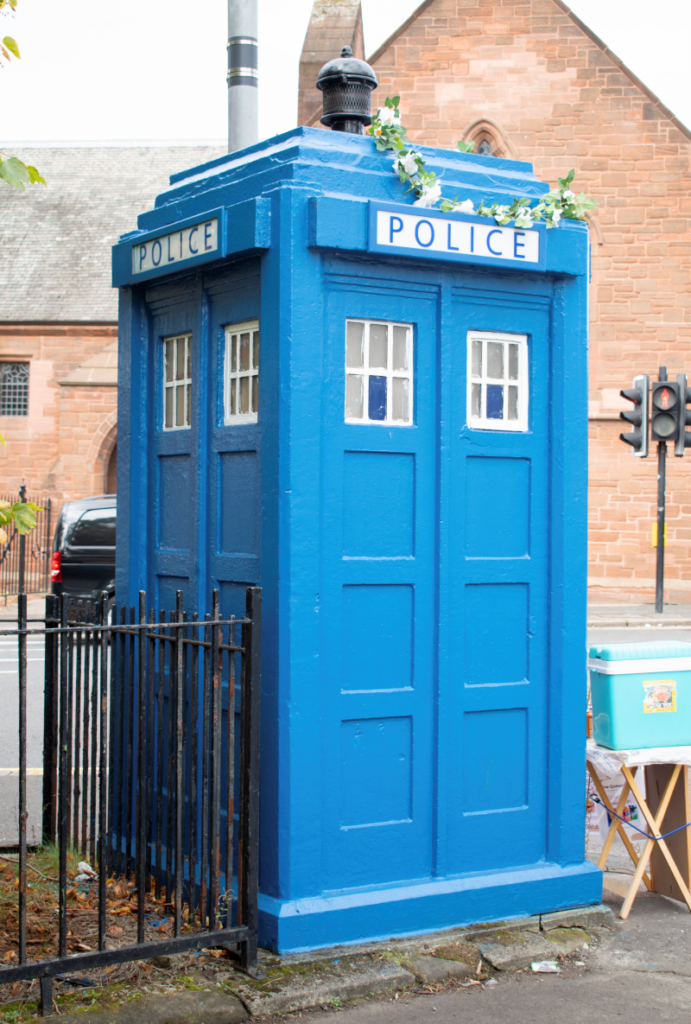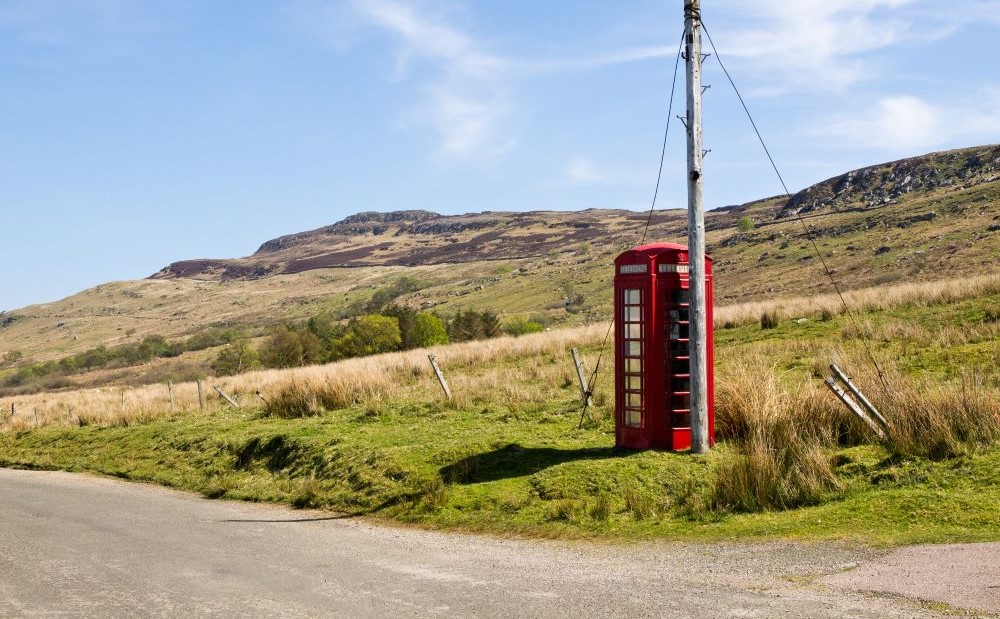Historic buildings make a nation. They set a character of a village, town or city as much as its rivers, hills and mountains. In Scotland we are lucky to have a rich built heritage, from North Unst Lighthouse in the north, to Isle of Whithorn Castle in the south.
However, while these buildings have remained, the way we live and interact with them has changed. How do we ensure that the historic character of our buildings remain while making the best use of them in the present?
Previously, Steven Robb highlighted some stand-out reuses of buildings in Edinburgh. But a building doesn’t need to be a grand church or former swimming baths to find a new life.
Even the most humble box can find a new purpose that can enhance our communities.
Police Boxes

A police box situated opposite Glasgow Cathedral (2022).
A staple of the 20th century British townscape, police boxes served as ‘miniature police stations’ for officers on the beat, equipped with a telephone, incident book, fire extinguisher, and first-aid kit. With the advance in handheld radios and rise in police vehicles, the need for these ‘mini stations’ lessened. However, a few have regenerated as cafes, art galleries, shops, and most famously: a time machine.
Glasgow’s boxes
Located at the corner of Great Western Road and Queen Margret Drive, the Glasgow Botanic Police Box could easily be mistaken for The Doctor’s famous TARDIS. It is a Glaswegian variant of the famous London Met Police box. It was designed in reinforced concrete by Gilbert MacKenzie Trench in 1928/9.
Today, the police box is home to Westend Roasters, serving up delicious soups and coffee from their 4ft square home. A similar café, the Police Box Coffee Shop, can be found when visiting our Glasgow Cathedral site.
With a clear demand, perhaps the Doctor should set up shop on his next visit to the city?

The Leaf and Bean Deli Cafe in Edinburgh (2025) and The Queen’s Cafe pop-up stand in Glasgow (2022).
An Edinburgh TARDIS?
The capital too has a tradition of finding new life for its police boxes. Rather than use the Met design, and copy Glasgow, in 1930 Edinburgh’s city architect E J MacRae designed a bespoke police box made of cast iron to blend in with the city’s classical architecture. Located on the Royal Mile, the Hunter Square Police Box (1931) serves as the ticket office for City of Edinburgh tours.

A photo of the Hunter Square Police Box, currently serving as the ticket office for City of Edinburgh tours. (© Crown Copyright HES, licensed via Canmore)
While not defying physics like the TARDIS, the Edinburgh police boxes have the advantage of being bigger on the inside than the MacKenzie Trench model, increasing their range of possible uses.
Phone Box
An even more abundant box of note is the Red Phone Kiosk, found across the United Kingdom, Crown Dependencies, and numerous countries of the commonwealth. Designed by the architect Sir Giles Gilbert Scott, the K2 kiosk was first installed in London in 1926.
Undergoing various re-designs of its own, the general style would remain until the end of the K6 installation in 1968. With the rise of the mobile phone from the 1980s onwards, the need for these public access boxes also reduced. However, the Red Phone Box has remained within the Britain’s cultural psyche. It was voted one of the country’s top iconic designs in 2006.
Phone box libraries
While police boxes are now largely confined to cities, red phone kiosks can also be found in smaller communities. One of these can be found in Dirleton, East Lothian, where the structure was converted into a community library in 2021. It joins similar projects taking place in Tighnabruaich, Bendochy and Charleston. At a time when small local libraries face the ever-increasing threat of closure, these boxes provide a much-needed and valued service for members of the community.

Dirleton phone box (left) and Kinrossie phone box (right), (© Crown Copyright HES, licensed via Canmore)
Life-saving boxes
Another community lifesaver is the Glendaruel phone box, which since 2011 has been home to a defibrillator. With their central location in villages and distinctive appearance, phone boxes are an ideal location for these life-saving machines. Similar installations have been placed in Gilmerton, Midbea and Springfield. If you know of a disused phone box that could serve a new purpose for your community, why not contact BT at the Adopt a Kiosk Scheme?
Keen to know more?
To find out more about HES’s work to support the adaptive reuse of historic buildings and why #HeritageMatters for net zero, find out more on our website.
Or, maybe you’re keen to travel in time and learn more about Doctor Who in Scotland? Yep, we have a blog for that too!

